Did we visit Napoli for Pompeii and pizza? Yes. Was it hot in July? Yes. My family loved every minute – and every bite – in and around Naples.
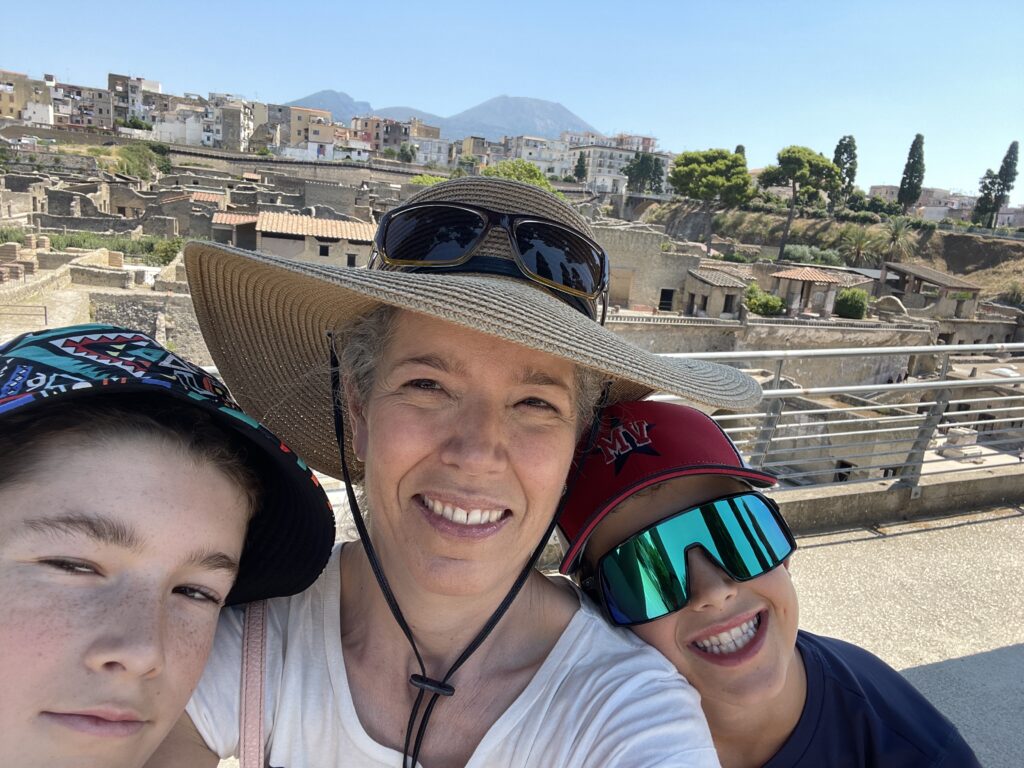
Napoli – Naples for English speakers – is not the first Italian city most American tourists visit. Those distinctions fall to Rome and Florence. I have visited Italy countless times and had never been south of Rome. Naples, with its storied food history (the tomatoes! The pizza! The coffee!) and even more storied history, beckoned. After researching the many things to do and see in Naples, I booked a week’s stay for me and my two boys, 13 and 11. Here’s how we managed the heat, the tours and the menus.
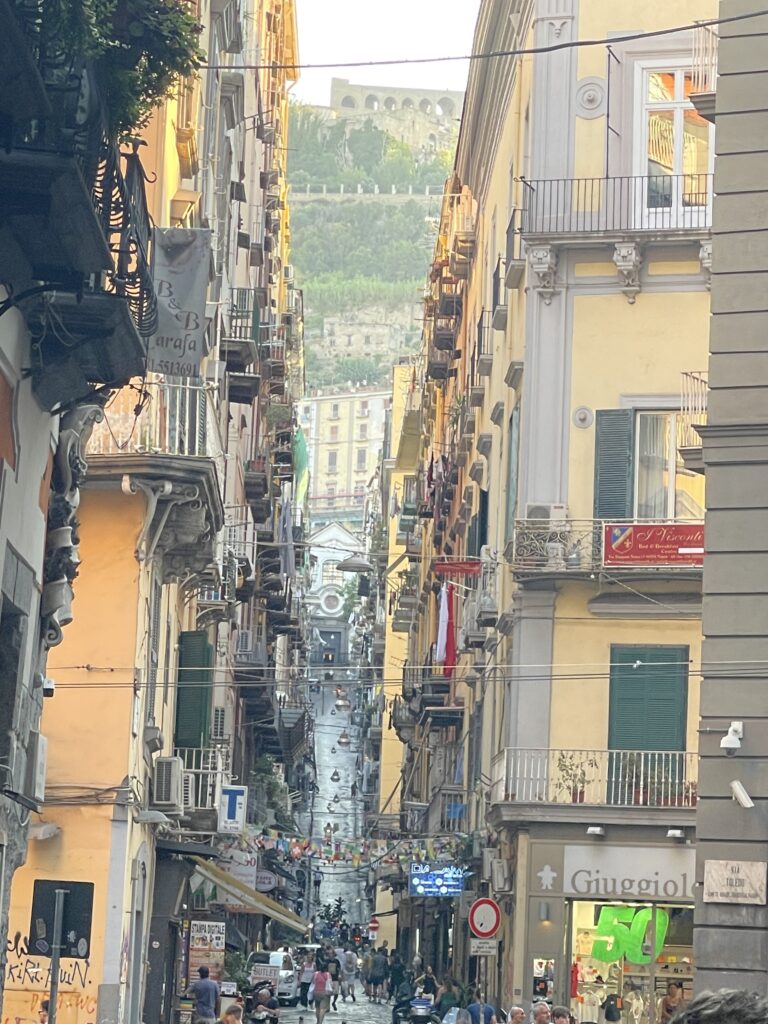
The Plan
Southern Italy is hot in July. Naples averaged 87°F every day we were there. (It was still cooler than Rome by a few degrees, due to each city’s unique geography.) We planned each day according to the weather. That meant we got up early to see the sights before lunch. We then had what I came to call “a lovely lunch” before heading back to our air-conditioned rooms to relax, work, and just be out of the sun and heat. Sometimes we went out for dinner, too, but after noticing how large the portions were, we often ate lunch leftovers for dinner.
The focus of our time was on two things:
- the ancient history of the area
- eating all the pizza
My kids were given no limits on how many times they could order pizza in Italy – should they desire, they could eat pizza three times a day. (The same rule applies to lobster when we are in New England.) We were, after all, in the town where pizza was invented in 1889.
And, as anyone who has ever traveled with kids will tell you, making a plan of where to eat is sure to go awry for one reason or another. We winged it. It was hot. Places within a short walking distance were favored. Here is how we spent an epic week in and around Napoli.
Day One: Centro Storico
Our first stop was the National Archeological Museum of Naples, where, after a latte at the museum café (with almond milk), we explored the tiny inlaid tiles, marble works, and other finery of ancient Pompeii and equally ancient Herculaneum.

Unexpected moment: upstairs in rooms dedicated to the Nuraghi (the ancient peoples of Sardinia), Lukas pointed to a menhir, a rather pointed oval sort of prehistoric stone erected all over western Europe. “This is from Asterix and Obelix,” he said, referring to the comic book series created by René Goscinny. “What?”, I said. “Obelix is a menhir delivery man,” Lukas continued. Turns out comics are good for something!

Back on the street, we wandered the streets of the Centro Storico neighborhood near the museum to find matches for our apartment stove, a bank with an ATM and a place for lunch.
When in Naples moment: A moped driver trying to pass a green city bus as it turned a tight corner instead smushed into the bus, the driver yelling the entire time at the bus driver about his terrible driving (of course the driver yelled back).
Stuffed Zucchini Blossoms at Re Lazzarone
Nearby, lunch at Re Lazzarone kicked off our expectations for what the food of Napoli could be–delicious. An appetizer of zucchini blossoms stuffed with locally made salame, provola, and ricotta, was salty, sweet, crunchy, creamy, delicious. Glistening green from its basil cream sauce, gnocchi were little pillows, impossible to stop eating. An entrecote steak, imported from Ireland, made Niki happy.

Maradona. Everywhere

We all marveled at the poster of Maradona on the wall – what was Maradona, the Argentinian known in the US for the Hand of God goal in the 1986 World Cup doing here? Little did we, who watch England’s Premier League and the Bundesliga, know that Diego helped the local club to the Serie A title in 1987 and the 1988-89 UEFA Cup, local football (soccer) heroics the city reveres him for. We saw his likeness all over the city, including inside the fridge at our apartment and literally every nook and cranny.
The Neapolitan Pizza Onslaught Begins

Turns out that one of the best-known pizzerias in Napoli was steps from our apartment. Antica Pizzeria del Borgo serves a full menu of pasta (primi) and entrees (secondi) but everyone comes for the pizza. At about 8 euros for a pizza that easily fed my two boys, our meal of appetizer, a salad, and a plate of veggie risotto and a glass of wine for me totaled a mere 35 euros. Best deal of our European summer.

Day Two: The Herculaneum
Most tourists stop in Napoli for a few hours to see Pompeii and maybe a tour of the Amalfi Coast before getting back on their cruise ship. That was fine with us as it meant more room at the Herculaneum, a much smaller city to Pompeii’s enormity and, in hindsight, our preferred ancient ruin.

Our lovely lunch was at Bistrot Italia, a restaurant with air conditioning not far from the ruin’s exit. (We sat in the back where it was even cooler.) A plate of meatballs started us off and we shared a plate of pasta mista with potatoes, cheese and bacon. A side dish of friarielli, translated as broccoli, was more like a broccoli rabe, but too bitter for the boys. The flavor improved with the house’s olive oil and salt but still, bitter.

Meatball at Bistrot Italia 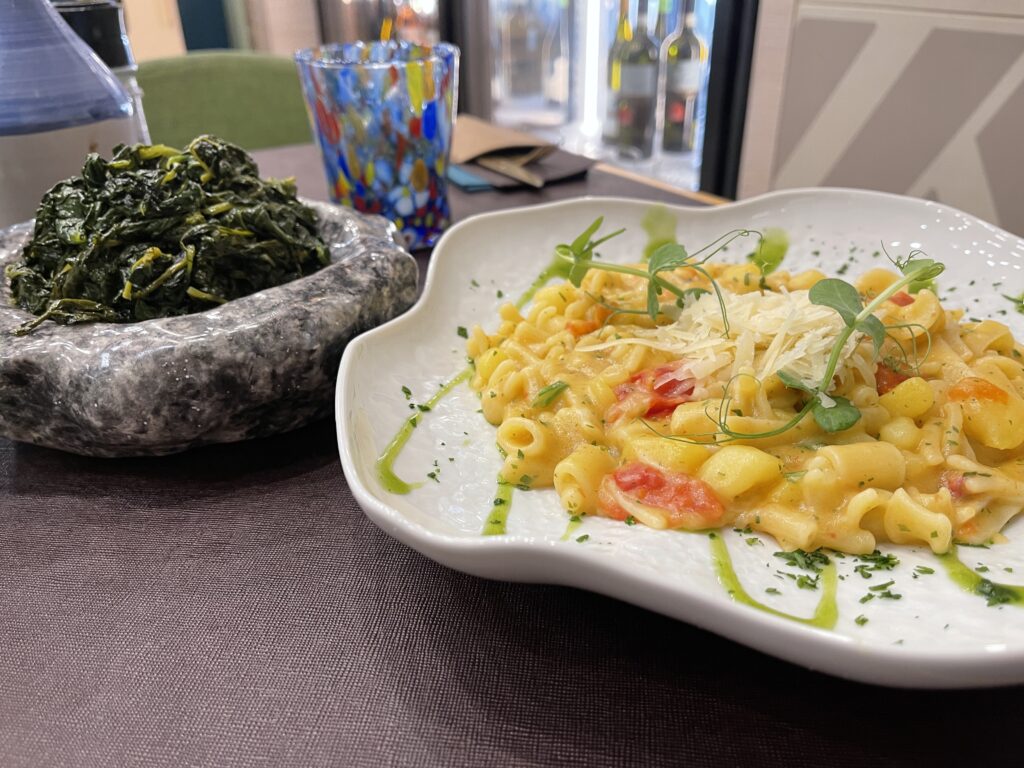
Friarielli and pasta mista at Bistrot Italia
Day Three: Paestum
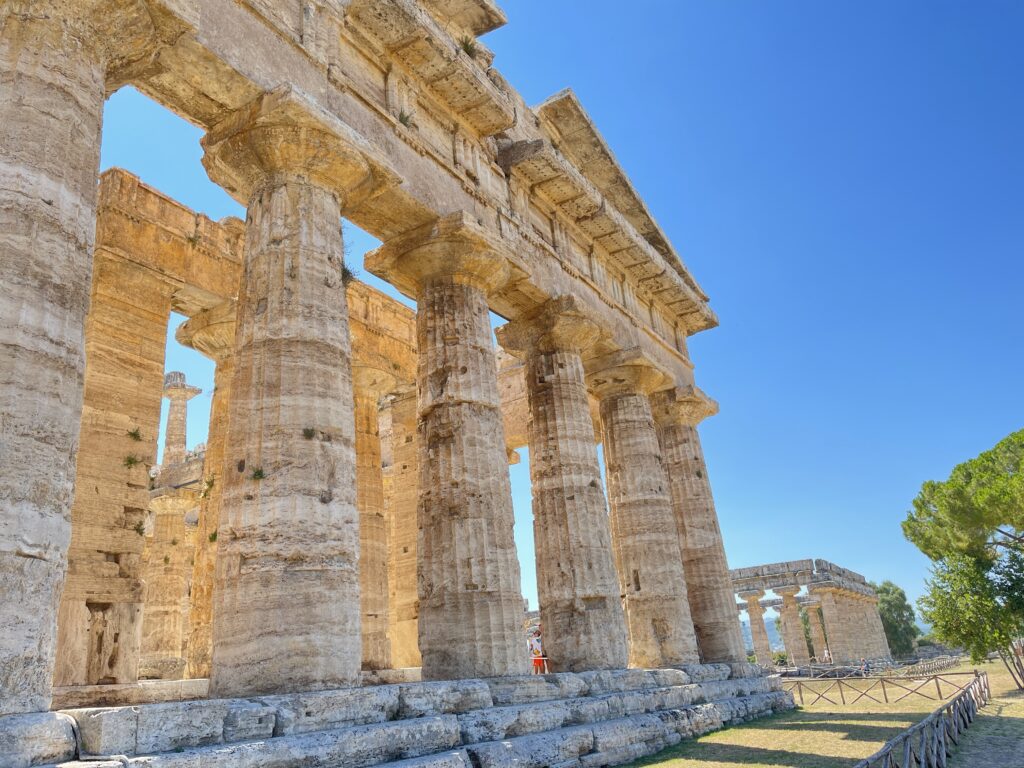
I gave the boys the day off from touring and traveled solo to the ancient Greek city about an hour south of Napoli. A small strip of shops and restaurants immediately adjacent to the ruins is where I found local pottery, souvenirs and lunch. I chose La Bottega del Gusto. Start with an espresso in a tiny cup before switching to wine and a plate of locally made charcuterie served with the regional cracker, taralli. (I asked for and received gluten-free bread.) The patio was so lovely, I only wished I had someone to share my meal with me.
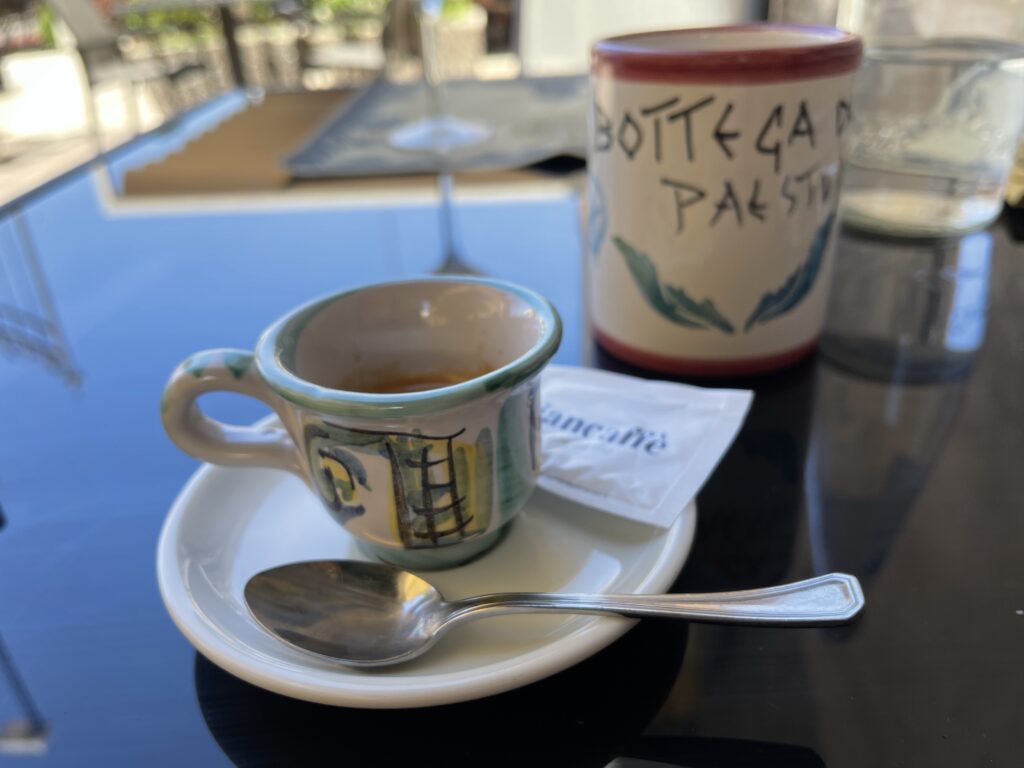
Day Four: Pompeii & Vesuvius
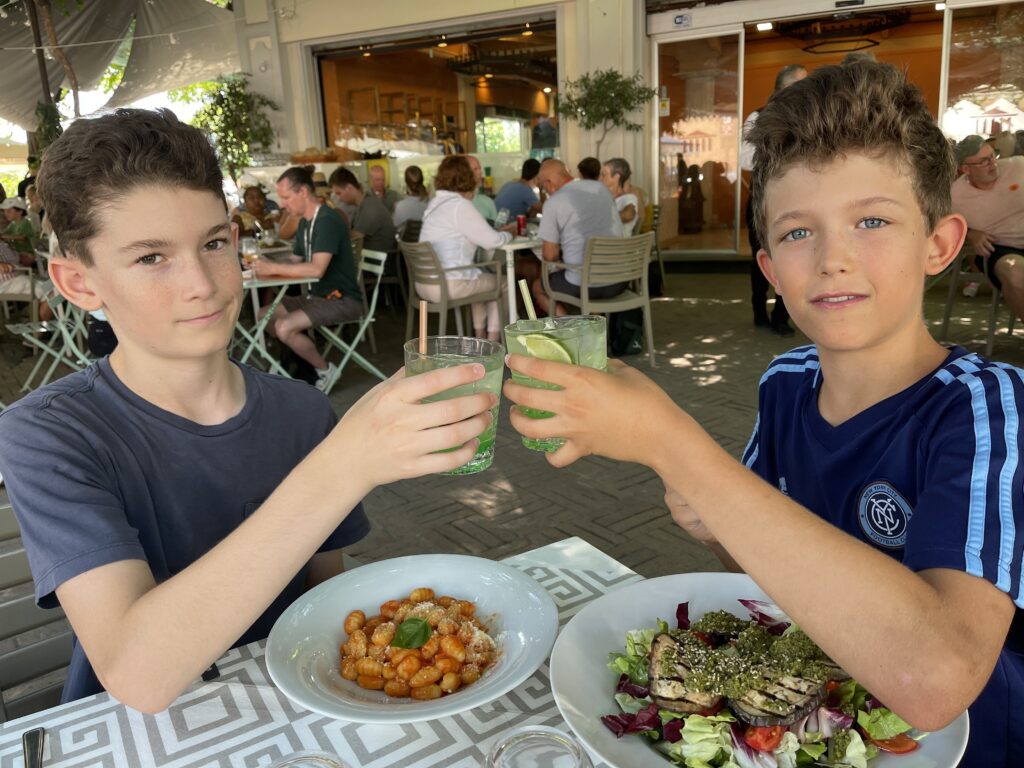
As at Herculaneum and Paestum, there is a strip of tourist-packed shops and restaurants just outside the exit of Pompeii. Today, we chose our lunch restaurant on name alone. Suisse Pompeii 1890 got out vote. A plate of gnocchi was 10 euros and a huge Vegetariana salad (€10) was enough for all three of us to share.
That afternoon, we took a local bus from Pompeii up to the base at Vesuvius, then hiked to the top, earning ice cream before the bus ride home and all the leftover pizza for dinner.

Day Five: Amalfi Coast
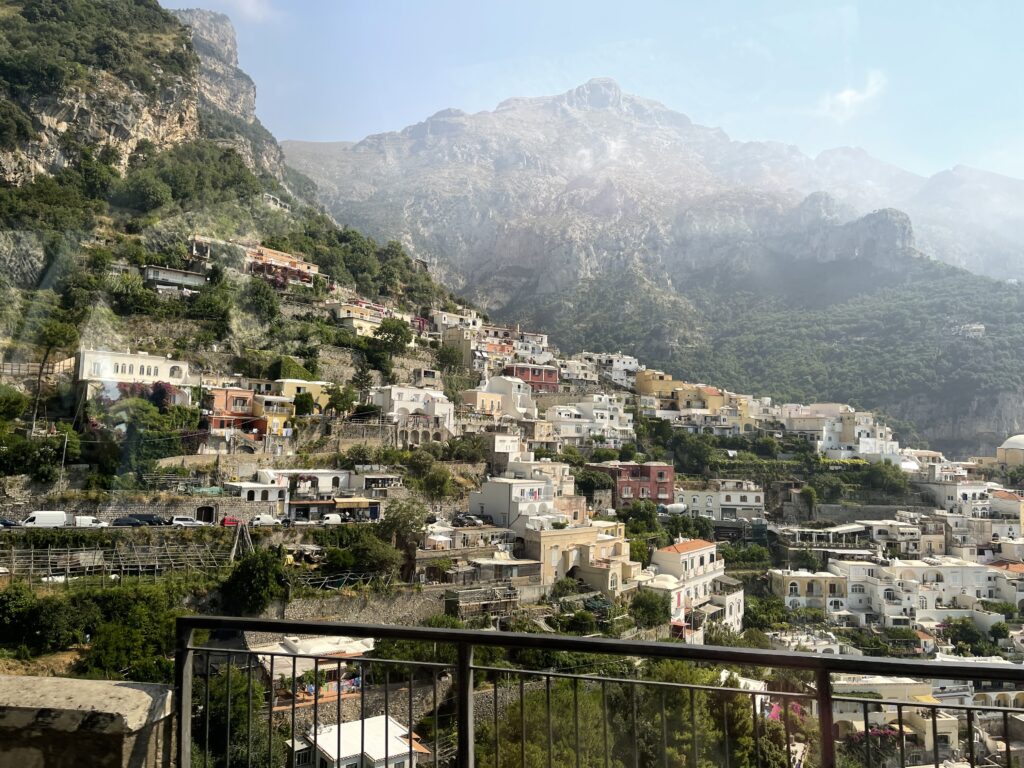
One of the main benefits of our apartment’s location on Corso Umberto I was its proximity to everything we needed – easy walking distance to the various train stations, shopping, supermarkets, restaurants, even the port. It was at the port where we picked up a day tour via air-conditioned minivan to the Amalfi Coast, First stop: Positano. We only had an hour here so the boys and I bought pastries and sorbetto limone stuffed into some of the zillions of lemons grown in the region. Happiness.
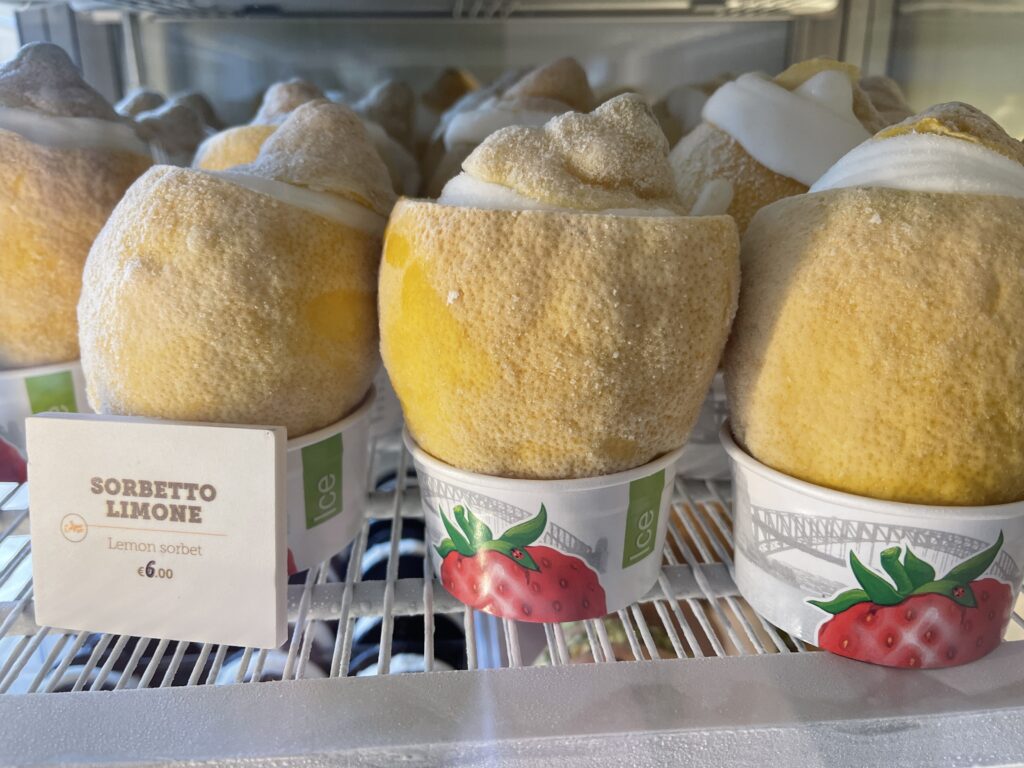
Gluten-free Pasta in Italy
We had enough time in Sorrento for lunch at Fauno Bar where I felt fortunate to have gluten-free stuffed ravioli for lunch. Bar none, this was the best gluten-free pasta dish I have ever had. Flavorful pasta, fresh cheese, sauce just sturdy enough to coat the pasta – perfect. The tomato salad yielded bright red, flavorful tomatoes and there was even a simple green salad, notable for its lack of eggplant. (Seasonal eating means lots of eggplant in summer.) They are used to tourists with allergy issues here, too, so a coffee with almond milk was no problem.
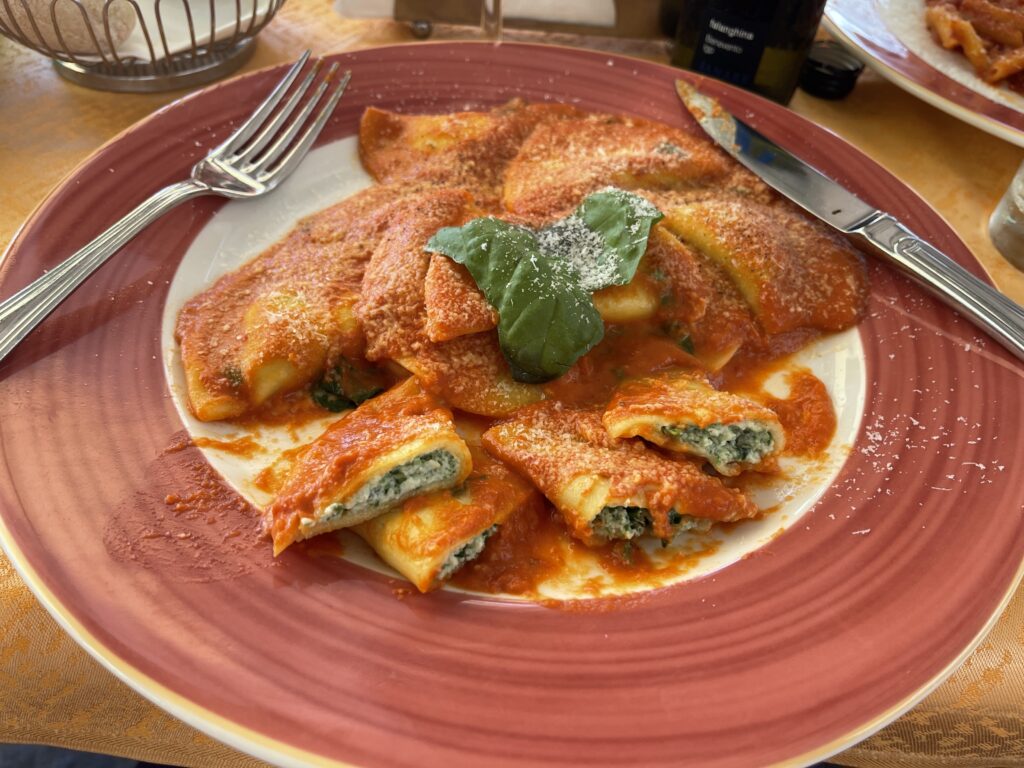
Stuffed gluten-free ravioli at Fauno Bar, Sorrento 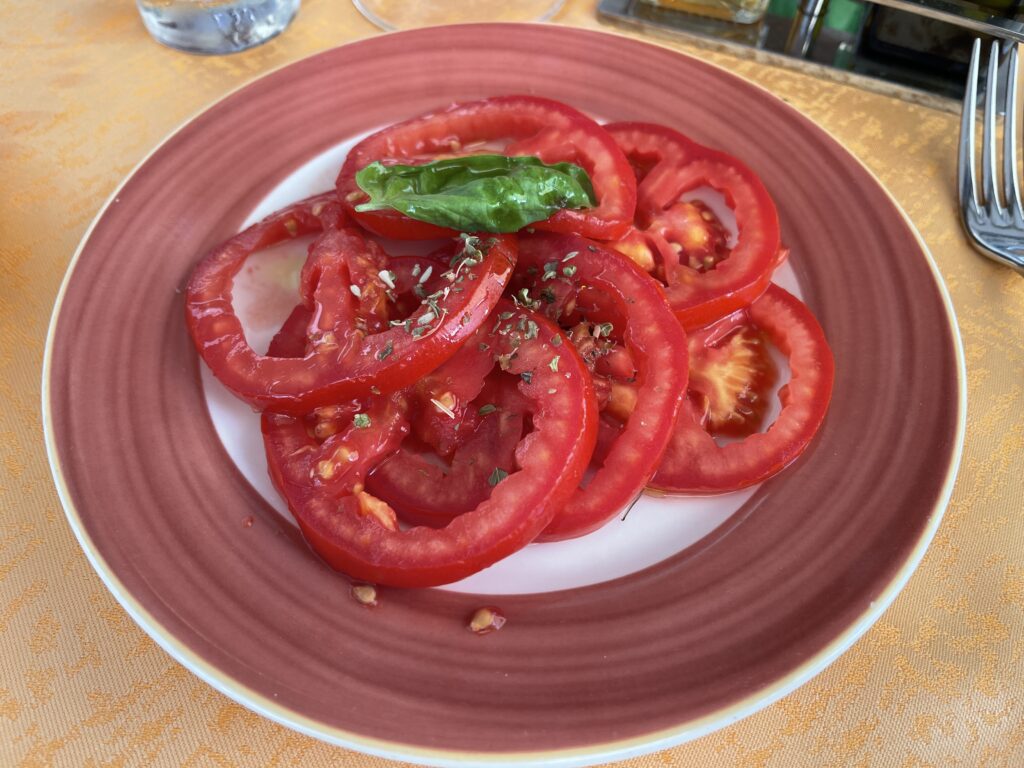
Tomato salad at Fauno Bar, Sorrento
Interesting side bar: southern Italy is a major producer of almonds so finding almond milk at restaurants was relatively easy.
Day Six: Centro Storico
Believe it or not, the boys wanted to go shopping – sneaker shopping, of course – and there are plentiful stores to accommodate their wishes. On our way to and from Via Toledo, the main clothes and shoe shopping area, we must have gone into 10 sneaker stores. Most were air-conditioned. After a find for Niki (Lukas found a pair the next day as we made our way to the central train station), lovely lunch was at O’Cerriglio. We had passed it on the way to shop and both boys agreed it should be our lunch spot.

We hadn’t really explored the region’s seafood so dove into an enormous appetizer plate of local shrimp. For the boys’ main course? Pizza. The portions here are enormous – every dish could easily feed four people and the pizza might have fed more. But Niki was hungry.
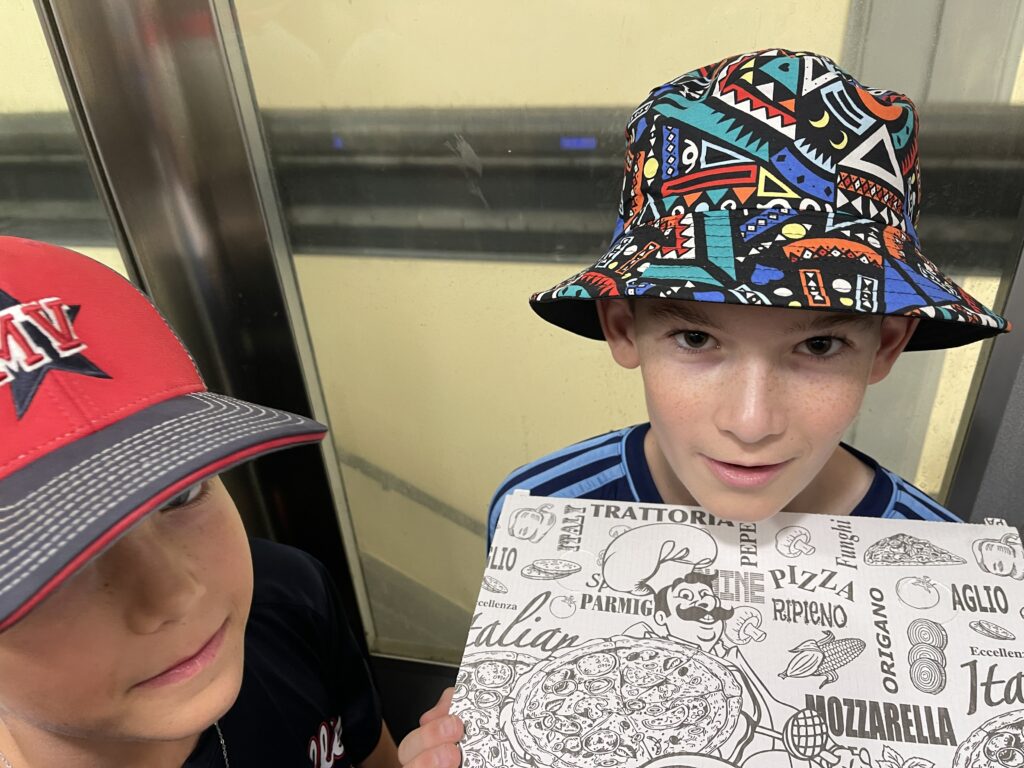
With the boys back in the AC, I took off for a late afternoon food tour to learn about the ancient cooking and eating rituals of Napoli. Too bad my guide forgot to make note of my “no gluten, no dairy” issues – those two items were plentiful on this 3 hour eating discovery – but I so loved walking the narrow streets, poking into little shops that only make burrata or specialize in a sauce that was popular hundreds of years ago.
Fresh Tuna and Zucchini Scapece
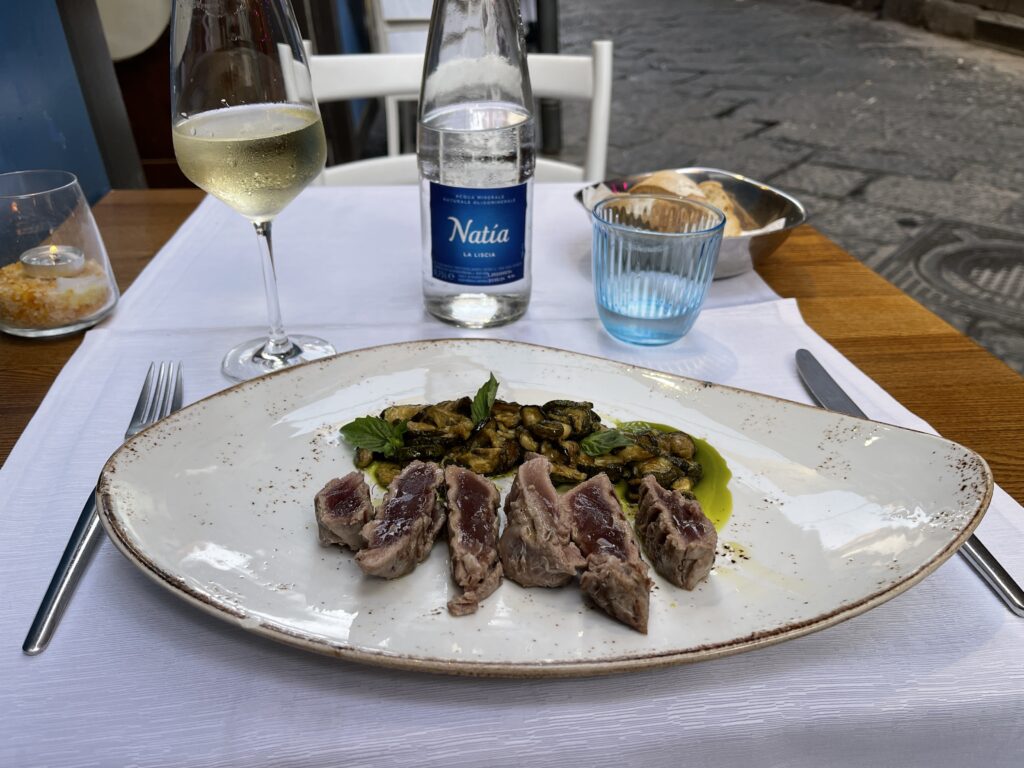
tonno rosso and zucchini scapece 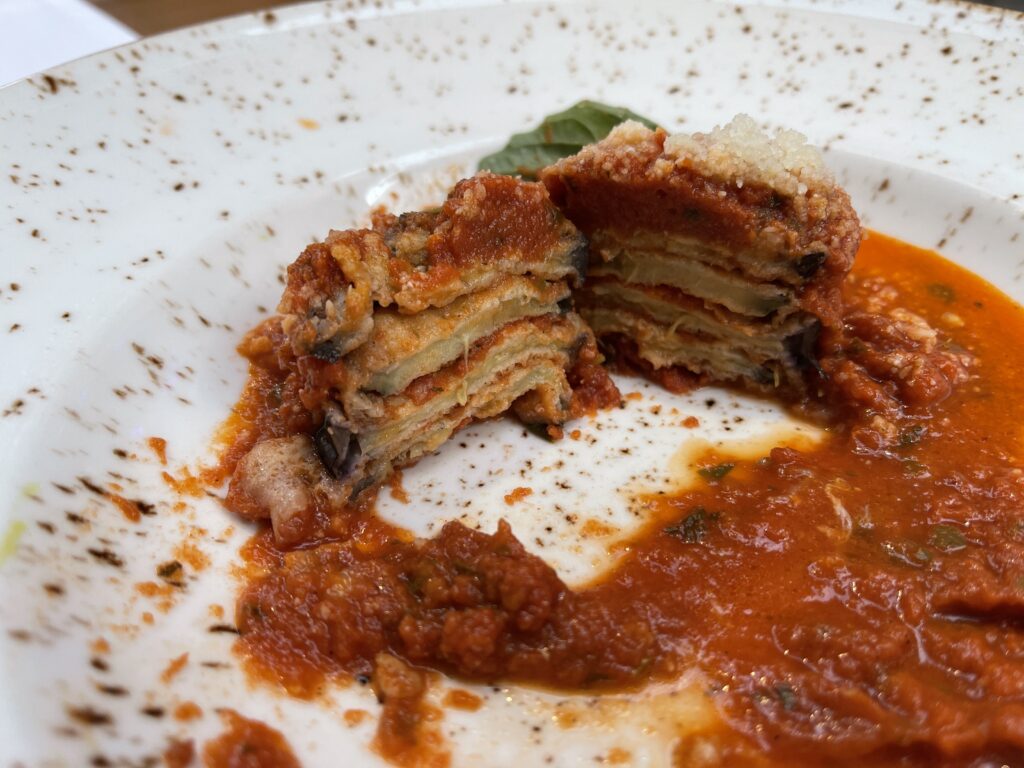
eggplant and Pecorino timbale
For dinner, I made my way to Cantina del Sole, which was empty at 8 pm (too hot, still, for locals to eat dinner – the place was packed by 9, though). I started with a classic timbale of eggplant (€6) layered with tomato sauce and Pecorino (why is every eggplant dish in Italy so good?) followed by a plate of locally sourced tonno rosso and thin ovals of zucchini (€20), served “scapece,” or with vinegar. Best zucchini I’ve ever had.
Honey, can I please bring an Italian chef home as a souvenir?

